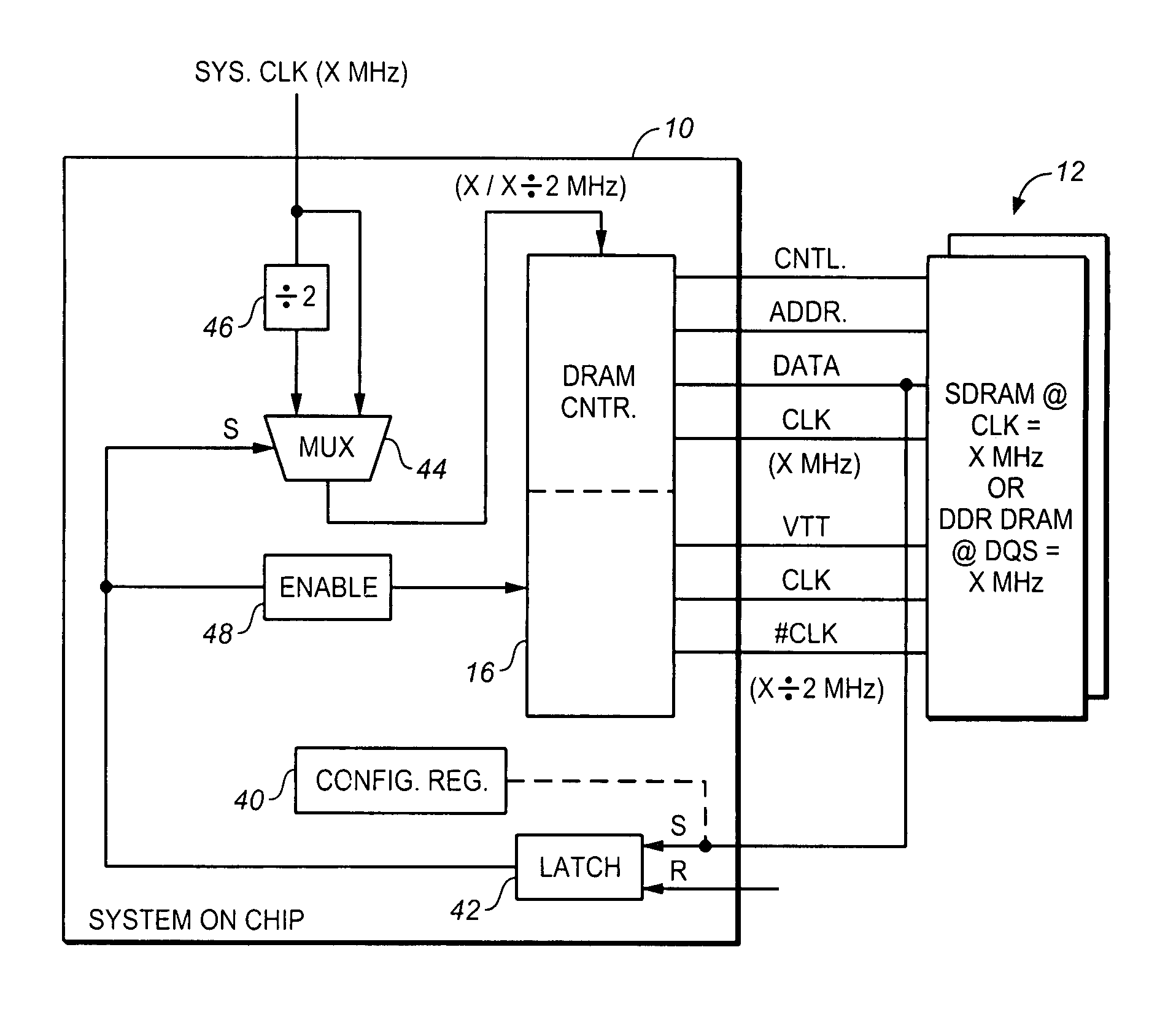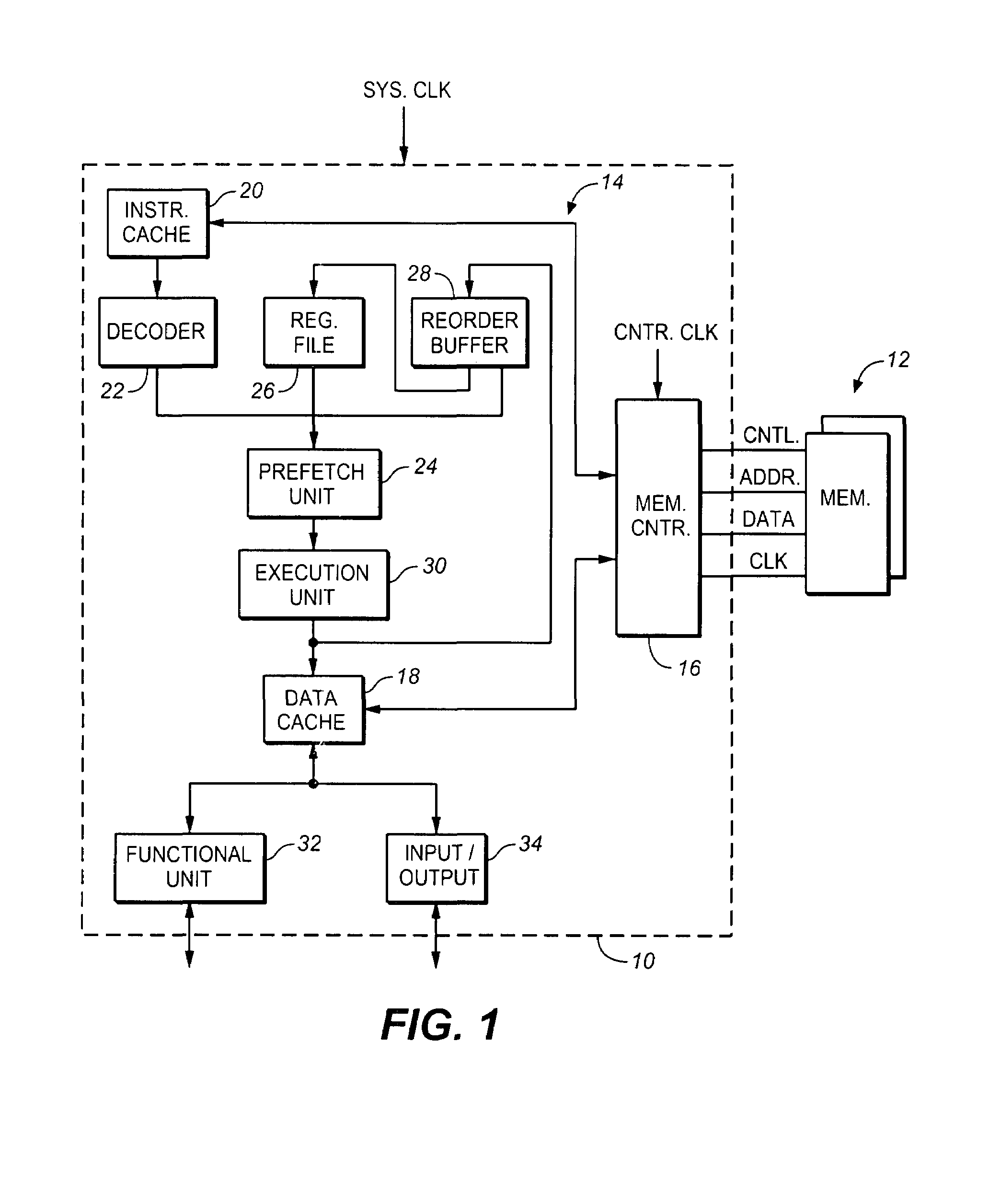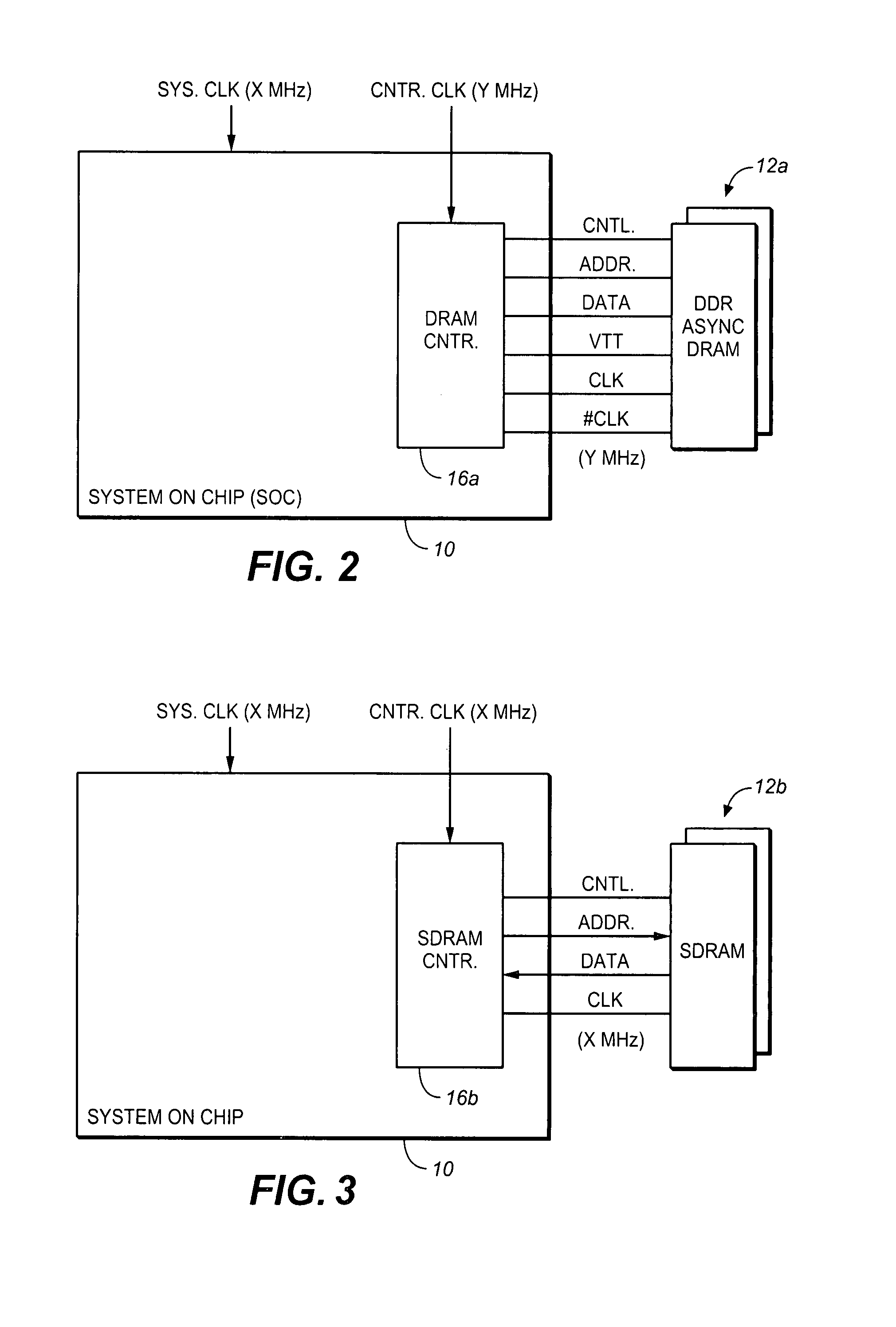Low power memory controller that is adaptable to either double data rate DRAM or single data rate synchronous DRAM circuits
a memory controller and low power technology, applied in the field of low power memory controllers, can solve the problems of inability to easily adapt the memory controller to accommodate, the cost of making ddr on a per-byte basis might also steadily decline compared to the sdr counterpart, and the existing memory controllers formed on an integrated circuit with an execution engine cannot be readily adapted to either form of memory
- Summary
- Abstract
- Description
- Claims
- Application Information
AI Technical Summary
Benefits of technology
Problems solved by technology
Method used
Image
Examples
Embodiment Construction
[0030]Turning now to the drawings, FIG. 1 illustrates a block diagram of various functional blocks within an integrated circuit 10 connected to external memory 12. External memory 12 is shown having several input / output pins, some of which are reserved for control, address, data, and clock pins that are coupled to pins of memory 12 via, for example, trace conductors within a substrate, such as a PCB. Within integrated circuit 10 are essentially two major subsystems: an execution engine 14 and a memory controller 16.
[0031]Execution engine 14 is illustrated in part. Preferably, execution engine 14 is a processor. A processor is known to incorporate two operational units: an integer unit and a floating-point unit. These units communicate data via a data cache 18 drawn from, for example, external memory 12. The integer and floating-point units are controlled by a single instruction stream supplied by instruction cache 20. The instruction stream can be drawn from external memory 12, for ...
PUM
 Login to View More
Login to View More Abstract
Description
Claims
Application Information
 Login to View More
Login to View More - R&D
- Intellectual Property
- Life Sciences
- Materials
- Tech Scout
- Unparalleled Data Quality
- Higher Quality Content
- 60% Fewer Hallucinations
Browse by: Latest US Patents, China's latest patents, Technical Efficacy Thesaurus, Application Domain, Technology Topic, Popular Technical Reports.
© 2025 PatSnap. All rights reserved.Legal|Privacy policy|Modern Slavery Act Transparency Statement|Sitemap|About US| Contact US: help@patsnap.com



